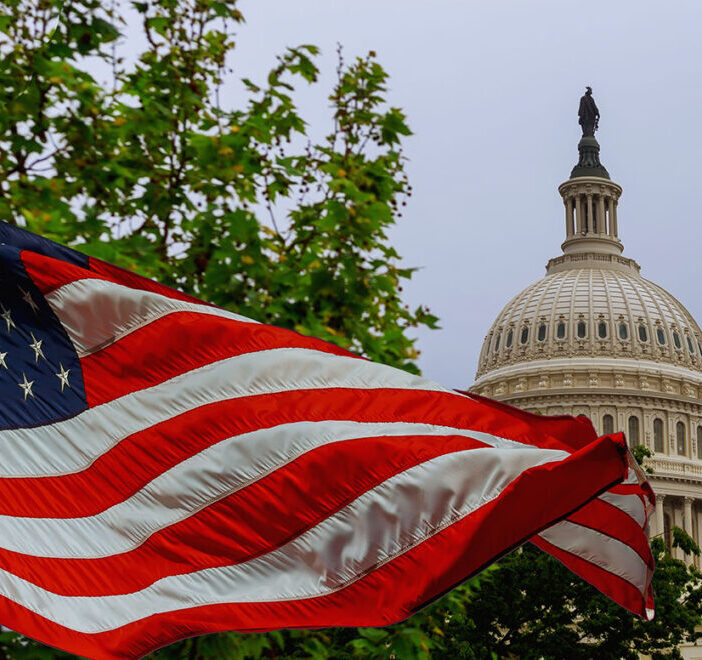Disappointing Developments in the 2020 Home Health Proposed Rule
Overview
This rule contains the proposals including the annual payment update, further information related to the implementation of the Patient-Driven Groupings Model (PDGM), the phase-out of the request for anticipated payment (RAP), regulatory changes that related to therapy assistants and maintenance therapy provision, as well as updates to the Home Health Quality Reporting Program (HH QRP), Home Health Value-Based Purchasing (HHVBP) Model, and the Home Health Consumer Assessment of Healthcare Providers and Systems (CAHPS) Survey. It also updates information related to the home infusion benefit but that will be covered in a subsequent article.
On the surface, the 2020 home health proposed rule has both positive and negative aspects. We support efforts to modernize and improve the home health benefit. Both the revision of payment to emphasize clinical factors and more closely tie payment to beneficiary needs (i.e., PDGM), as well as the proposal to allow health paraprofessionals to perform at their highest level of training should help to achieve that goal.
However, the combined negative financial impact due to an increased reliance on unobserved, prospective behavior assumptions, the proposal to eliminate RAP payments, and the ongoing phase-out of the rural add-on payments will trouble many of our members, who as nonprofit organizations, operate on slim margins. Cash flow can be an issue. Because of the current trend of shifting beneficiaries out of institutional settings for acute and post-acute care, we would like to see CMS supporting home health agencies through this transition to the PDGM, as opposed to punishing the entire field due to practices of bad actors in the past.
As we complete a full review of the proposal, we will continue to share our members’ concerns and comments with CMS to partner together and ensure high-quality home health services are delivered to the growing numbers of Medicare beneficiaries.
Payment Update
In 2020, the payment update will be 1.5% as required by the Bipartisan Budget Act (BBA) of 2018 with a 0.2% decrease due to the drop in rural add-on to yield a 1.3% total. Unfortunately, had the BBA not changed prior law, the payment update would have been an estimated 2.6% after the productivity adjustment based on estimated home health market basket update.
The rural add-on program continues to phase down with the 2020 add-on factors being 0.5% for the High Utilization category, 3.0% for the Low Population Density category, and 2.0% for the All Other category.
PDGM
The PDGM includes changes to many aspects of the home health payment system. The unit of payment changes from 60 days to 30 days. That change is required to be made in a budget neutral fashion. It also eliminated therapy thresholds as a means of determining payment. The home health resource groups will be determined by admission source and timing, clinical groups, functional impairments, and comorbidities. This increased specificity related to the beneficiaries who need home health services subsequently increases the complexity of payment categories from 153 to 432.
Behavior Assumption Adjustment
The BBA requires CMS to make assumptions about behavior changes that could occur as a result of the implementation of the 30-day unit of service and case-mix adjustment factors. CMS has indicated three behavior assumptions that they believe providers will demonstrate with the implementation of PDGM. They are:
- Clinical Group Coding – This assumes that home health agencies (HHAs) will change their documentation and coding practices and would put the highest paying diagnosis code as the principal diagnosis code in order to have a 30-day period of care be placed into a higher-paying clinical group. In the proposed rule CMS estimates a downward adjustment of -5.91% related to this assumption.
- Comorbidity Coding – The home health claim allows HHAs to designate 1 principal and 24 secondary diagnoses as opposed to the 1 primary and 5 secondary diagnoses on the OASIS. The assumption is more coding will increase the prevalence of comorbidity adjustments. In the proposed rule CMS estimates a downward adjustment of -0.37% related to this assumption.
- Low Utilization Payment Adjustment (LUPA) Threshold – With a change in LUPA thresholds for a 30-day unit of service, the assumption is that HHAs will provide 1 to 2 extra visits to receive a full, not LUPA, payment. In the proposed rule, CMS estimates a downward adjustment of -1.86% related to this assumption.
Given some overlap between these assumptions, CMS indicates a total downward adjustment of -8.01% which is slightly less than the aggregate total of the assumptions. This also increases the already troubling decision from the 2019 final rule indicating a downward adjustment of -6.42% from the same adjustments.
LUPA Threshold Changes
With the change to the 30-day unit of payment and the variation across the payment categories, CMS has moved away from a uniform, 4 visit LUPA threshold to having each of the 432 case-mix groups with its own threshold, between 2 and 6 visits, to determine if a 30-day period of care would receive a LUPA. The proposed LUPA thresholds for the 2020 PDGM payment groups with the corresponding Health Insurance Prospective Payment System (HIPPS) codes and the case-mix weights are listed in Table 14.
Transition to PDGM
CMS proposes that 60-day episodes which begin before January 1, 2020 that they would be paid the national, standardized 60-day episode payment amount and will be case-mix adjusted using the CY 2019 case-mix weights. For those 60-day episodes that end after January 1, 2020, but where there is a continued need for home health services, CMS proposes that any subsequent periods of care would be paid the 30-day national, standardized payment amount with the appropriate 2020 PDGM case-mix weight applied.
Phase Out of RAPs
The existing split-percentage payment approach is proposed to go away in the rule. New HHAs, those certified on or after January 1, 2019, will not be able to submit for a RAP payment. However, they will still be required to submit a ‘‘no pay’’ RAP)at the beginning of a period of care in order to establish the home health period of care, as well as every 30 days thereafter.
For current HHAs, CMS proposes to reduce the split-percentage payment from the current 60/50%, depending on a new or subsequent episode, to 20% percent in 2020 for all 30-day periods of care, both initial and subsequent, and the full elimination of the split-percentage payments for all providers in 2021.
Beginning in 2021, CMS proposes that all HHAs submit a one-time submission of a notice of admission (NOA) within 5 calendar days of the start of care to establish that the beneficiary is under a Medicare home health period of care. The NOA would be used to trigger HH consolidated billing edits and would allow for other providers and the CMS claims processing systems to know that the beneficiary is in a home health period of care. Subsequently, failure to submit a timely NOA would result in a reduction to the 30-day Medicare payment amount, from the start of care date to the NOA filing date, as is done similarly in hospice. CMS proposes that the penalty for not submitting a timely home health NOA would result in Medicare not paying for those days of home health services from the start of care date to the NOA filing date.
Therapy Assistants Providing Maintenance Therapy
Presently, a therapist assistant is able to perform restorative therapy under the Medicare home health benefit, but regulations state that only a qualified therapist, and not an assistant, can perform maintenance therapy. Regulations allow therapist assistants to provide maintenance therapy in a skilled nursing facility, but not in the home health setting. CMS proposes to modify the regulations to allow therapist assistants, rather than only therapists, to perform maintenance therapy under the Medicare home health benefit.
HH QRP
The HH QRP currently has 30 measures for the CY 2020 program year, as outlined in Table 41 from the 2019 final rule. In the proposed rule, the HH QRP has 19 measures for the CY 2021 program year. This is due to a collapse of the CAHPS measure down to 1 composite measure, 2 fewer claims-based measures, and 5 fewer OASIS measures.
In line with the Meaningful Measures Initiative, CMS proposes to remove 1 measure from the HH QRP beginning with the 2022 HH QRP. They are removing pain-associated quality measures from quality reporting programs in an effort to mitigate any potential unintended, over-prescription of opioid medications inadvertently driven by these measures. CMS proposes to remove the Improvement in Pain Interfering with Activity Measure (NQF #0177) from the HH QRP beginning with the CY 2022 HH QRP under the measure removal factor of collection or public reporting of a measure leads to negative unintended consequences other than patient harm.
Two new measures are proposed as well: (1) Transfer of Health Information to Provider–Post-Acute Care; and (2) Transfer of Health Information to Patient–Post-Acute Care. Both of these proposed measures support promoting effective communication and coordination of care, specifically the area of the transfer of health information and interoperability. In addition to the two new measure proposals, CMS proposes to update the specifications for the Discharge to Community – Post Acute Care (PAC) HH QRP measure to exclude baseline nursing facility residents from the measure.
Public Reporting of HHVBP Model
In an effort to further transparency and improve quality in home health, CMS proposes to publicly report two points of data from the final 2020 Annual Report for each participating HHA in the model that qualified for a payment adjustment for CY 2020: (1) the HHA’s total performance score (TPS) from performance year 5, and (2) the HHA’s corresponding performance year 5 TPS Percentile Ranking. They expect that the data would be made public after December 1, 2021.
Home Health CAHPS
As with the QRP, CMS proposes to remove pain questions to avoid potential unintended consequences that may arise from their inclusion in CMS surveys and datasets. For CAHPS this means removing Question 10 from all HHCAHPS surveys which says, “In the last 2 months of care, did you and a home health provider from this agency talk about pain?”
Home Infusion
The Medicare home infusion therapy benefit covers the professional services, including nursing services, furnished in accordance with the plan of care, patient training and education (not otherwise covered under the durable medical equipment benefit), remote monitoring, and monitoring services for the provision of home infusion therapy and home infusion drugs furnished by a qualified home infusion therapy supplier. In the proposed rule, CMS updates the temporary transitional payments based on the CPT code payment amounts in the 2020 physician fee schedule (PFS). At the time of the proposed rule, they do not yet have the CY 2020 PFS rates. However, actual payments starting on January 1, 2020 will be based on the PFS amounts. They will publish these updated rates in the CY 2020 physician fee schedule final rule. The rule includes proposals regarding home infusion therapy services for 2021 and beyond to allow adequate time for eligible home infusion therapy suppliers to make any necessary software and business process changes for implementation on January 1, 2021. We’ll summarize these proposals in a subsequent article.
Next Steps
LeadingAge will work on analysis and collect feedback from members to develop public comments on the rule. Additionally, we continue to pursue advocacy efforts to have the behavior assumption adjustments removed through the Home Health Payment Innovation Act. If there are any questions about the proposed rule, please contact Aaron Tripp via email or at (202)508-9433.

Most Recommended
October 15, 2025
 Shutdown Week Three: Impact of Ongoing Closure on Affordable Housing
Shutdown Week Three: Impact of Ongoing Closure on Affordable Housing
November 25, 2025
Fiscal Year (FY) Funding 2026
October 07, 2025
Immigrant Workforce Matching Program Brings Workforce Relief
Recently Added
December 09, 2025
Collaborating Around the Globe to Teach and Learn
December 08, 2025
MedPAC: 2026 Work Plan on PAC Priorities
December 08, 2025



